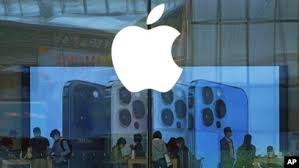Summary Points:
- Chinese authorities blocked export of iPhone 17 trial equipment to India.
- Apple currently assembles 25% of global iPhones in India.
- Labour laws, quality concerns, and geopolitical friction delay Apple’s expansion.
- China increases scrutiny of equipment exports to slow India’s rise.
- Apple looks to Japan, South Korea, and Taiwan for future equipment needs.
Apple’s India Manufacturing Ambitions Hit a Wall
Apple’s ambition to expand its production base in India has run into an unexpected adversary — China.
According to reports, earlier this year, Chinese officials blocked a key Apple supplier from exporting equipment required for iPhone 17 trial production to India. The supplier had to set up a proxy company in Southeast Asia to reroute the machinery to Foxconn’s Indian facility.
Why Apple Is Betting Big On India
India’s growing role in global tech manufacturing is no accident. Several factors make it attractive:
- Lower US tariffs: India faces only 10% US import tariff compared to China’s 125%.
- Government incentives: India’s production-linked incentive (PLI) schemes lower the cost for manufacturers.
- Skilled labour: A large, young workforce offers long-term potential.
- Growing local market: India’s rising consumer base adds another layer of demand.
Apple already assembles 30–40 million iPhones annually in India — nearly 25% of its global output — indicating that its India pivot is well underway.
ALSO READ: India Welcomes the Satellite Age: Telecom Minister Invites Global Satcom Giants
But India Isn’t China Yet
Despite the promise, Apple’s journey hasn’t been smooth. Several barriers have surfaced:
Labour Law Challenges
- In China, Apple factories run 12-hour shifts.
- In India, due to labour laws, only 8-hour shifts are allowed.
- Apple tried to lobby for longer shifts, but workers reportedly weren’t open to the idea.
- As a result, Apple has had to hire more workers to maintain production.
Quality and Cost Issues
- In 2023, Apple attempted to set up sub-assembly units in India.
- These units failed to meet Apple’s strict quality and cost benchmarks.
- The work was sent back to China, highlighting India’s still-maturing manufacturing capabilities.
China Is Playing Defense
As Apple shifts production away from China, Beijing seems determined to hold its ground.
Chinese authorities are:
- Blocking or delaying export licenses for crucial Apple manufacturing equipment.
- Taking months (instead of weeks) to approve shipment of precision tools like lasers and assembly machines.
- Warning Apple’s suppliers against cutting Chinese jobs or relocating factories.
Sources reveal that Foxconn saw export approvals from China for Indian factories go from 2 weeks to 4 months.
ALSO READ: Find Your Startup Fit: Business Models That Made Million
Apple Looks for Plan B
To counter the delays, Apple is:
- Exploring Japanese, South Korean, and Taiwanese suppliers for machinery.
- Planning to test and certify this new equipment, a process that could take over a year.
- Using low-tech workarounds in India, with some automated processes being performed manually to keep operations running.
The Bigger Picture
Apple is not alone. Many global tech firms are using the current 90-day window of reduced US tariffs to rethink their China reliance.
Vietnam, though once a favoured option, now faces a 46% US tariff. Compared to that, India’s 10% rate (before a possible increase to 27%) still offers a better deal.
Combined with its size, labour pool, and friendly government policies, India remains a strong contender for becoming a new electronics hub.
Apple’s India journey is a mix of opportunity and resistance — internal and external. While China is tightening its grip on exports, India is still catching up in quality and labour flexibility. If Apple can overcome these hurdles, it may not just shift factories — it could shift the balance of global manufacturing



